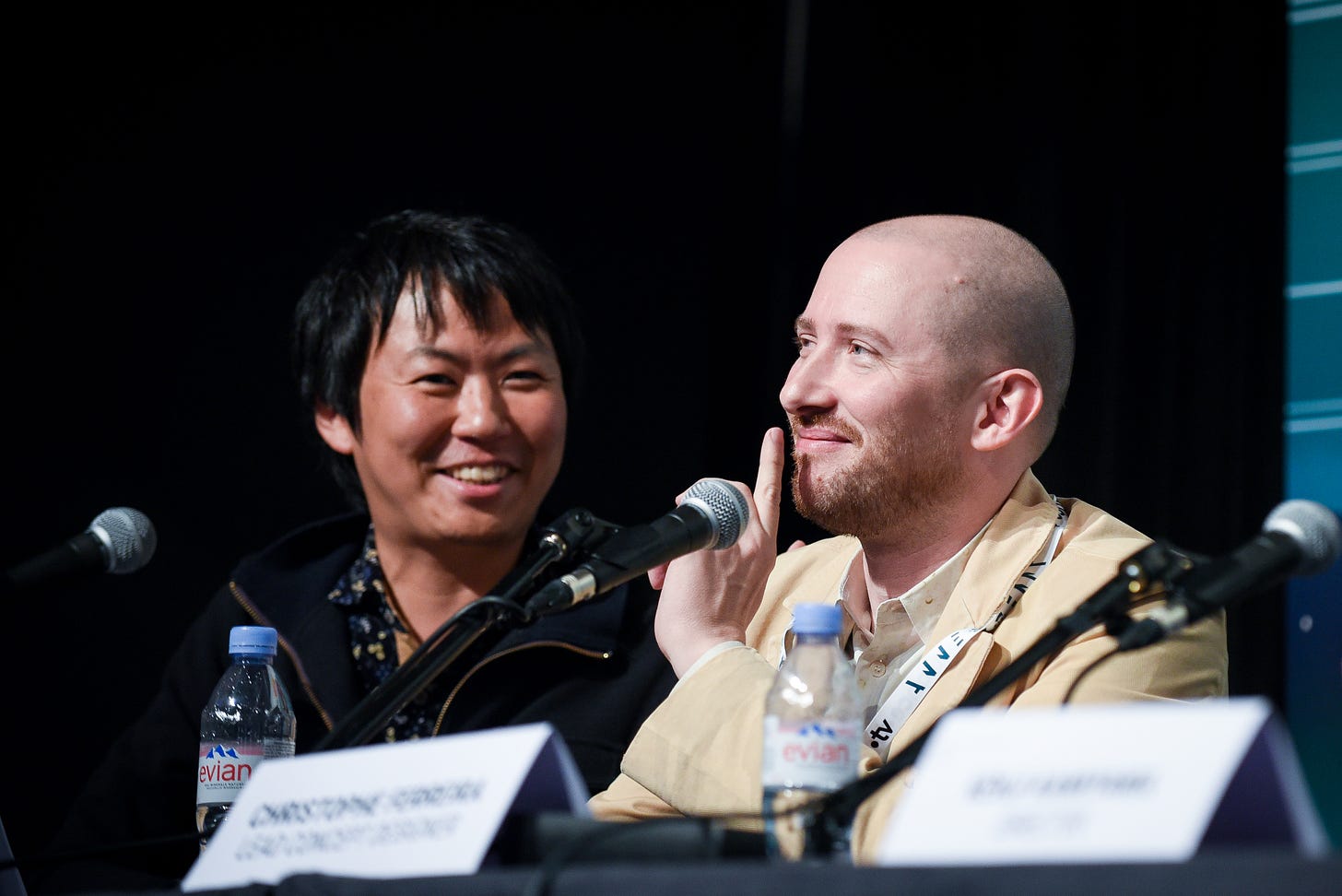Qubic Pictures adapts to Netflix anime shift
In part two of an interview with Animenomics, CEO Justin Leach explains his company's plan to form an anime production committee for future international co-productions
This is a feature story from Animenomics, covering the business of anime and manga.

Netflix has shifted its anime strategy from creating original content to acquiring more licensed content, forcing New York-based anime production management company Qubic Pictures to shift how it finances future international anime co-productions.
Why it matters: Netflix entered the Japanese market in 2015 and made its mark with exclusive and original anime content.
As previously reported by Animenomics, anime production studios began re-evaluating their relationships with the streaming giant after it first reported subscriber losses in 2022.
What’s happening: “They’ll still do high-quality, high-budget productions, but I think they’re doing much less now in terms of the number of projects,” Qubic Pictures chief executive officer Justin Leach said about Netflix in an interview with Animenomics.
Despite Netflix’s anime viewership growing 11.3 percent in hours watched in the first half of 2025, anime marketing agency White Box Entertainment found that this growth isn’t being driven by exclusive titles.
The intrigue: Leach, who has been a producer of two anime projects for Netflix, says he’s considering forming a production committee for an upcoming anime project to account for the shift in how the streaming giant spends money on anime.
“It’s actually more profitable for producers now to make a committee than it is to directly finance an anime through a major platform because you can get residuals on a production committee,” Leach explained.
Leach acknowledges criticism of production committees, which are often accused of preventing anime creators and studios from receiving the benefits of anime’s growing international revenues, but he admits the model also has its merits.
The bigger picture: In the decade since Netflix’s entry into Japan, the number of original anime productions have declined by one-third, according to an Animenomics analysis of Association of Japanese Animations anime production data.
Of the more than 240 television anime series that aired in Japan last year, about 45 percent were adapted from manga, 10 points higher than the 2010s average, showing increasing entrenchment of manga adaptations in the anime industry.
Go deeper: Read about Leach’s experience working with animation producers outside Japan, plus part two of his full interview (for paying subscribers), below.
In your experience, how do animation producers outside Japan who want to work with Japanese studios see anime? Are they interested in anime because it brings in new audiences? Is it a medium that they want to try to work with? Is it just a source of IPs that could become big business?
For a lot of the producers, their children love anime. COVID was a big opportunity for people to learn about anime. Some people who hadn’t watched it before were looking for something new to watch, and they stumbled across anime. Some of them have also become new fans.
Some of them can’t ignore the trends that are happening in the industry. If you go to a convention now, you can see how big and how popular anime is. Some producers have been around for a long time, and I feel like Hollywood’s going through a bit of a crisis in finding the type of content that appeals to everyone right now. Sometimes that content is very different than what they normally have produced before. More traditional companies like Disney haven’t really made much anime. This is very different from their core brand, but that’s what everyone is asking for right now.
I feel like the recent surge in popularity of anime across the world is forcing a lot of people to ask questions like “What is this all about?” “Why do people like this so much?” “We have to be a part of this.” It’s one of those trends that can’t be ignored, and I think everyone’s trying to figure out the best way to embrace it and make it part of the new type of content that’s being created out there—shows like Blue Eye Samurai or Castlevania.
There’s also the anime-adjacent category that’s becoming popular, which is finding an audience generally leaning towards adult animation. Arcane and Spider-Verse are examples. I’m not sure what’s causing the change exactly, but it seems to be that's what the younger generation really, really want right now. I feel lucky because that’s what I’ve been doing most of my life, but I also have a lot of friends who work in the western animation industry, and they’ve been having a lot of trouble right now because of this correction that's happening. It’s been tough for a lot of people.



